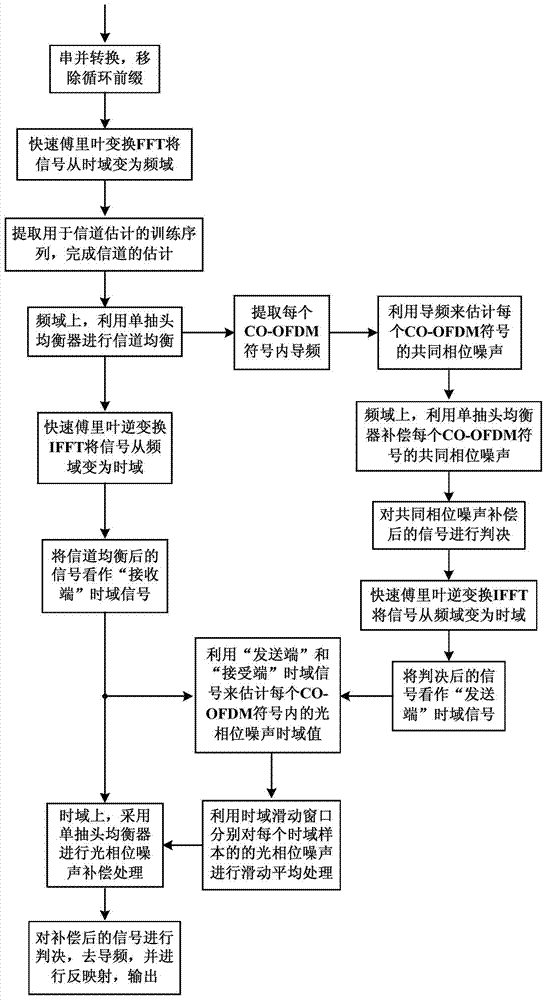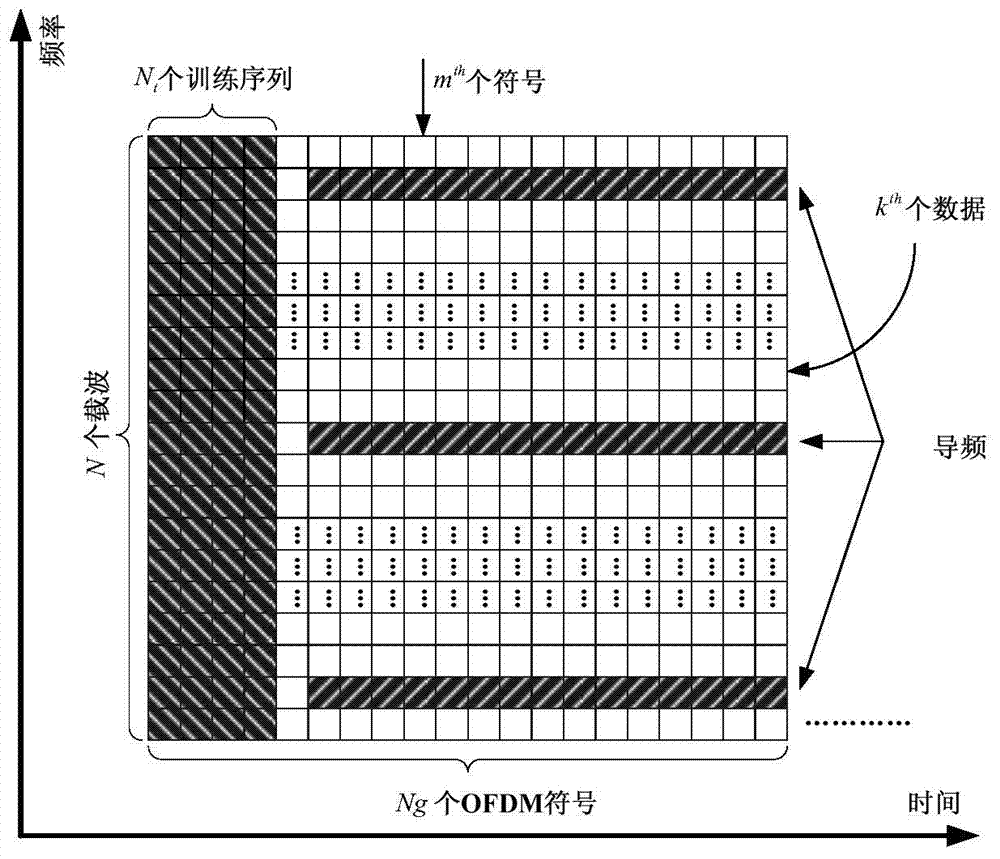Sliding window-based estimation compensation method for CO-OFDM optical phase noise
A CO-OFDM and sliding window technology, which is applied in the field of CO-OFDM optical phase noise estimation and compensation based on sliding windows, can solve the problems of limiting the overall performance of the CO-OFDM system, reducing the effective rate and spectrum utilization of the system, and increasing the pilot frequency Quantity and other issues
- Summary
- Abstract
- Description
- Claims
- Application Information
AI Technical Summary
Problems solved by technology
Method used
Image
Examples
Embodiment 1
[0048] The method of the invention mainly relates to the problem of signal processing at the receiving end of a coherent optical orthogonal frequency division multiplexing system (CO-OFDM). In this embodiment, the pilot frequency is used in the CO-OFDM receiver module to estimate the common phase noise of each CO-OFDM symbol, so the signal data frame structure at the CO-OFDM transmitter is as follows image 3 shown.
[0049] Combine below figure 1 and figure 2 , the steps of a method for estimating and compensating CO-OFDM optical phase noise based on a sliding window in this embodiment are described in detail.
[0050] S101: The receiving end performs serial-to-parallel conversion on the received signal.
[0051] S102: Remove the cyclic prefix.
[0052] S103: Transform the time-domain signal into a frequency-domain signal by using Fast Fourier Transform (FFT).
[0053] S104: Extract a training sequence used for channel estimation, and complete channel estimation.
[00...
PUM
 Login to View More
Login to View More Abstract
Description
Claims
Application Information
 Login to View More
Login to View More - R&D
- Intellectual Property
- Life Sciences
- Materials
- Tech Scout
- Unparalleled Data Quality
- Higher Quality Content
- 60% Fewer Hallucinations
Browse by: Latest US Patents, China's latest patents, Technical Efficacy Thesaurus, Application Domain, Technology Topic, Popular Technical Reports.
© 2025 PatSnap. All rights reserved.Legal|Privacy policy|Modern Slavery Act Transparency Statement|Sitemap|About US| Contact US: help@patsnap.com



